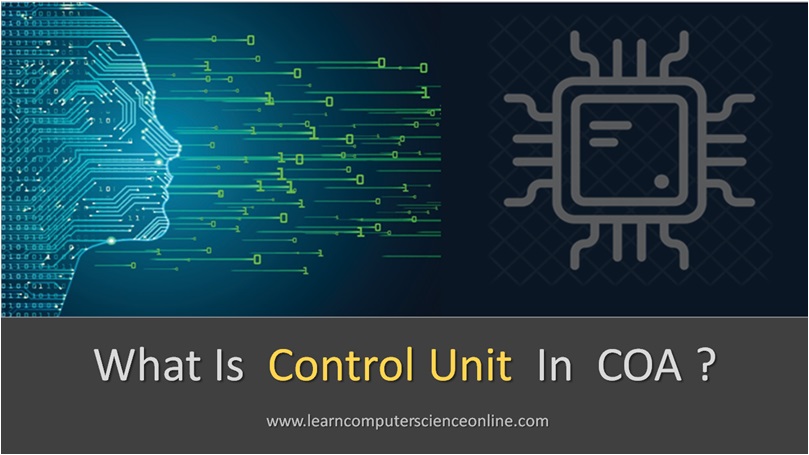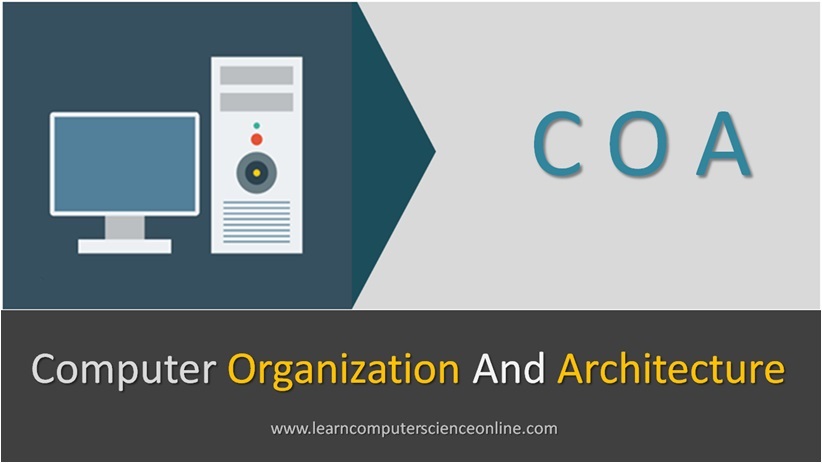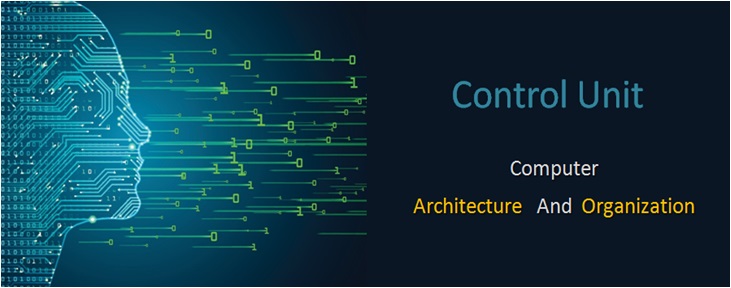
Control Unit
Control Unit In Computer Architecture
The control unit (CU) is a fundamental component of a computer’s central processing unit (CPU). Its main function is to manage and coordinate the operations of the CPU. It also controls the flow of data and instructions between the CPU and other parts of the computer system.
The control unit is responsible for interpreting and executing instructions fetched from the computer’s memory (RAM). It fetches instructions from the main memory RAM and decodes them, determining the specific operations that need to be performed. It then directs the appropriate components within the CPU to carry out those operations.
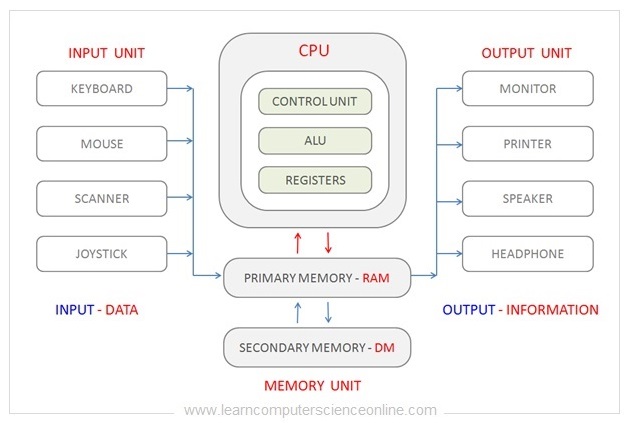
The control unit ( CU ) is an internal component of the microprocessor architecture that generates the necessary control signals to execute the program instructions and to control the various operations performed by the processor.
The Central processing unit ( processor ) contains three functional units. These functional units are control unit ( CU ), arithmetic and logic unit ( ALU ) and the memory unit ( MU ).
The control unit controls and directs the various operations performed by the central processing unit ( CPU ). It is the CU that decodes the program instructions.
What Is Control Unit ?
The control unit and its functions is an important topic in computer organization and architecture. The control unit is a vital component of the processor architecture. The control unit handles many crucial functions performed by the CPU.
The processor internally consist of three functional units. The CPU functional units include control unit (CU) , arithmetic logic unit (ALU) and the memory unit (MU).
In computer architecture, the main function of the central processing unit ( CPU ) is to execute the program instructions. The processor ( CPU ) is also responsible to control all the operations performed by the computer system.
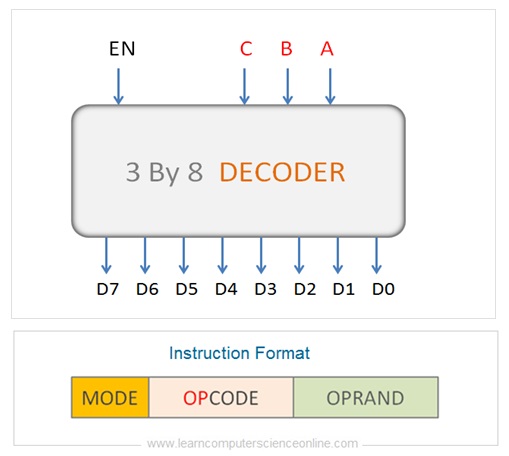
The processor ( CPU ) controls all the activities and operations of the computer with the help of control unit. The CU also decodes the machine instructions.
In this tutorial, you will learn what is control unit , how it works , CU block diagram and important functions performed by the control unit ( CU ).
In addition to instruction execution, the control unit also manages the sequencing of instructions. It ensures that instructions are executed in the correct order and synchronizes the activities of various components within the CPU to maintain proper operation.
The control unit interacts with other components of the CPU, such as the arithmetic logic unit (ALU) and the registers. It coordinates the transfer of data between these components and memory, as well as handling control signals and timing signals.
In general, the control unit plays a crucial role in the operation of a computer’s CPU by managing instruction execution, coordinating data flow, and maintaining the overall control and synchronization of the system.
Control Unit In Computer Architecture
Table Of Contents
What Is Control Unit ?
In computer architecture , the control unit is defined as an important component of the central processing unit ( CPU ) that controls and directs all the operations of the computer system.
The microprocessor is considered to be the brain of the computer system. The CPU internally consist of three main functional units ( CU , ALU and MU ).
It is the control unit that generates the necessary control signals that directs the various hardware components connected to the system.
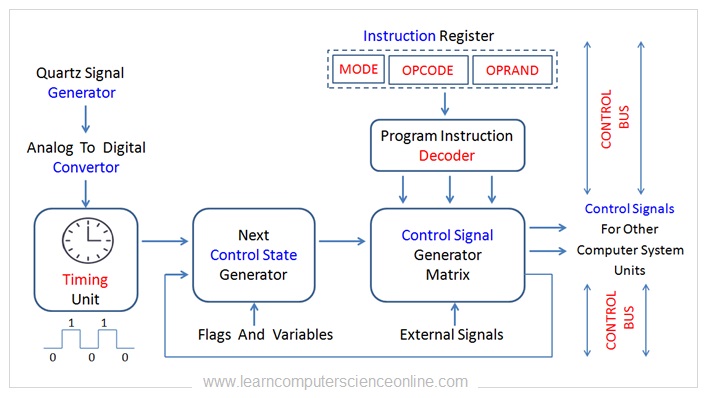
These control signals are essential part of the computer architecture to synchronize the operations of the various hardware system components and external peripheral devices connected to the system.
The control unit internally contains a decoder unit . The main function of this decoder unit is to decode the machine instructions. The CU after decoding the instructions, directs the processor to perform the desired operation.
This fundamental part of the CPU directs all the other parts of the computer system on what to do and when to do it. As part of a microprocessor, the Control Unit orchestrates the processing of data and execution of instructions by managing the flow of information between the processor’s various components.
Other components of CPU include the arithmetic logic unit (ALU), registers, caches, and the system’s memory. Understanding the functionality and operations of the Control Unit provides insight into the inner workings of microprocessor, computing devices and their efficiency.
Control Unit Components
The control unit ( CU ) internally has four important components :
Control Unit
Timing And Control Logic
The central processing unit is driven by a stream of clock signals generated by the timing unit of the control unit. The timing unit internally consist of quartz oscillating crystal that generates the analog signals. These analog signals are converted into digital sign wave by a analog to digital converter.
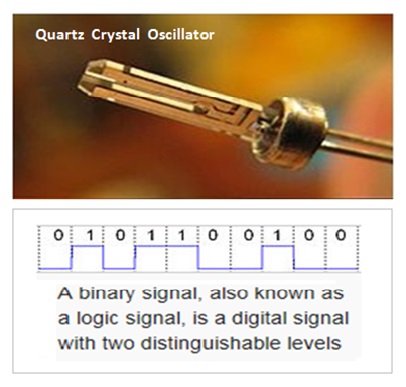
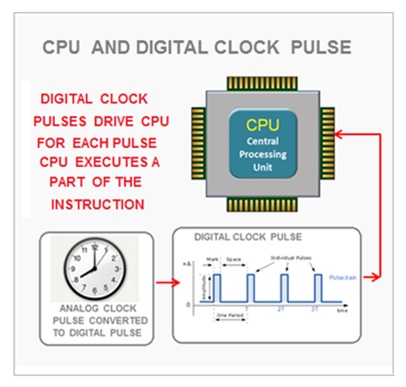
The quartz crystal oscillator is used to generate a pulse of analog signals . However, a computer is a digital machine and designed to interpret only digital clock pulse that can be represented in the binary form 0 and 1 .
Therefore, a clock circuit converts the analog pulse generated by crystal oscillator to a steady stream of digital clock signals represented by a square wave.
For each clock signal , a CPU completes part of the instruction execution. And for this reason the CPU clock speed controls the processor speed.
Control Unit
Program Counter Register ( PC )
The CPU internally makes use of high speed internal memory called CPU register. The CPU memory unit consist of number of registers.
The CPU initiates the program execution by placing the address of the first instruction into the program counter register to be fetched from the main memory (RAM).
The program counter register is automatically incremented each time the current instruction is fetched. And therefore, the program counter always contains the address of the next instruction to be fetched.
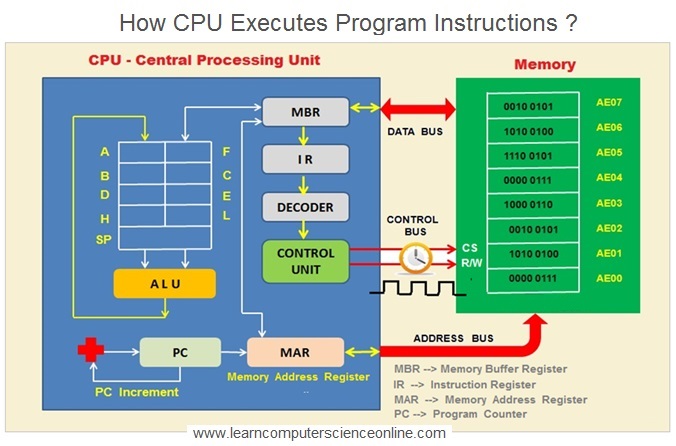
The Program Counter (PC) register is a vital component in computer science, particularly within the context of CPU architecture. It is a specialized register (small high speed memory) within the CPU responsible for keeping track of the memory address of the next instruction to be fetched and executed.
As the CPU processes instructions, the PC register increments to point to the next instruction that is to be fetched from the memory, allowing for the sequential execution of program code. The PC register plays a critical role in the fetch-execute cycle, a fundamental operation in computer processing.
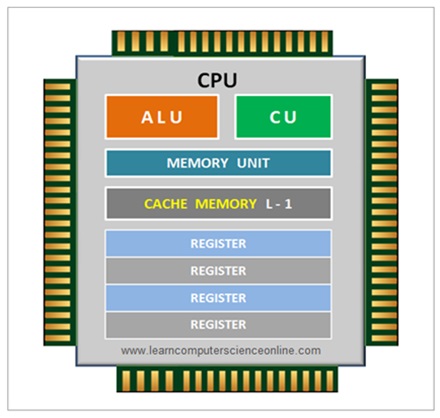
During the fetch phase, the CPU retrieves the instruction from memory using the memory address stored in the PC register. Subsequently, during the execute phase, the instruction is decoded (By CU) and executed (By ALU), and the PC register is updated to point to the next instruction in memory.
In essence, the PC register serves as the roadmap for the CPU, guiding it through the program’s instructions in the correct sequence. Its accurate and timely updating is essential for the proper functioning of the CPU and the successful execution of computer programs.
Control Unit
Instruction Register ( IR )
In computer architecture , the instruction register ( IR ) is also alternately referred to as current instruction register ( CIR ). The instruction register is a part of the control unit. The instruction register actually holds the current instruction that is being decoded and executed by the processor.
During the program execution , the instruction register is used to store the instruction word. The IR is used to temporarily store the instruction that is fetched from the memory.
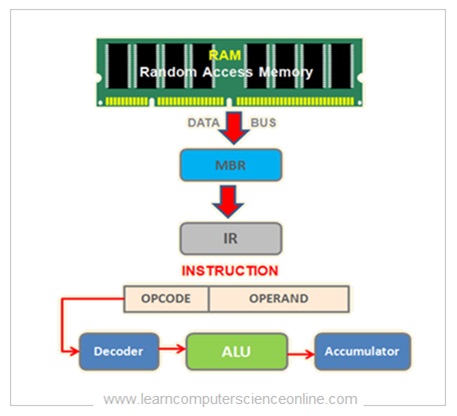
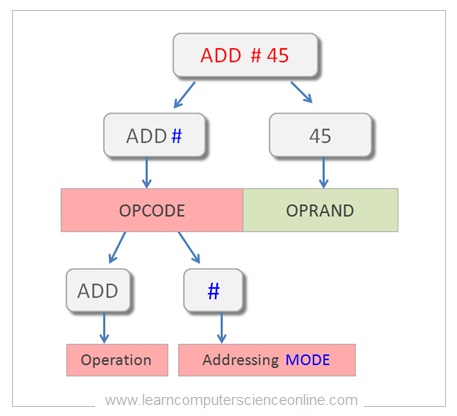
The instruction is a binary word or code that defines a specific operation to be performed. The instruction code is also called as operation code denoted by OPCODE in the machine instruction format.
The CPU decodes the OPCODE from the instruction format and then executes the desired operation as per the instruction set architecture ( ISA ).
Control Unit
Instruction Decoder
The control unit internally consist of instruction decoder circuit that decodes the machine instruction format.
The main function of the instruction decoder unit is to translate the operation code part of the machine instruction and direct the ALU. The ALU operates on the data as per the operation code ( Opcode ) specified and the instruction set architecture ( ISA ) supported by the processor.
The instruction decoder circuit consist of number of sub decoders that decodes the bits pattern of the operation code ( OPCODE ).
Operation Code In Instruction Format
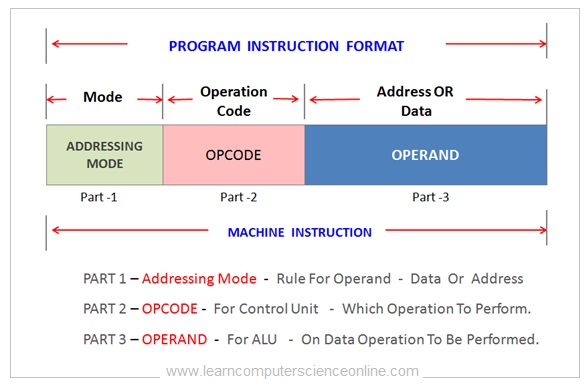
Let us consider example of the 3 X 8 Decoder used in the 8085 architecture .The 3-to-8 Decoder accepts three inputs and decodes into eight outputs.
This decoder has three inputs as A, B, and C and eight output from Y0 through Y7. Based on the combinations of the three inputs, only one of the eight outputs is selected.
3 X 8 Decoder

Functions Of Control Unit
What Are Functions Of Control Unit ?
In computer architecture , The control unit is an important component of the CPU architecture and performs following functions.
- The control unit controls the movement of data, memory read and write operations between the processor and the main memory RAM.
- The control unit generates the steady stream of clock pulses that regulates speed of the instruction cycle. The instruction cycle is performed by the CPU to execute the program instructions.
- The control unit generates the control signals for all hardware system components to regulate their activities.
- The control unit also decodes the machine instruction format and directs the ALU to perform the desired operation. The ALU operates on the data fetched into the CPU registers.
Types Of Control Unit
What Are Types Of Control Unit Designs ?
In computer architecture , The control unit architecture can be of two types. Each type is fundamentally differs in terms of its hardware implantation.
Hardwired Control Unit.
Microprogrammed Control Units
Hardwired Control Unit
The Hardwired control unit design is based on the fixed architecture. In this type of CU, the control signals required to execute the program instructions are generated by the special hardware timing unit and logical circuits.
Since these CU implement the fixed hardwired design that does not allow any modification in the mechanism to the generate the control signals without incorporating the change in the electronic circuit.
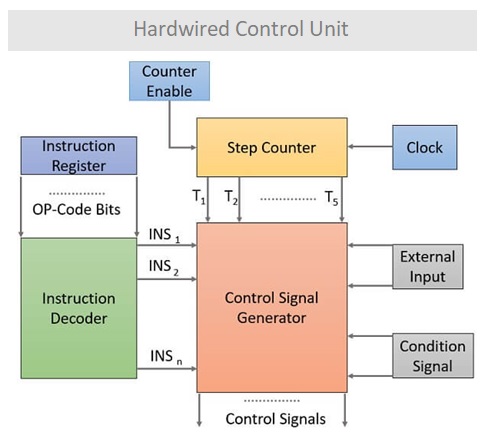
The operation code part of the instruction format contains the basic data required to generate the control signals. The instruction decoder circuit decodes the operation code part of the instruction. The instruction decoder internally consists of set of many decoders that decode different fields of the instruction operation code (Opcode).
This type of CU architecture is preferred in case of a reduced instruction set computing (RISC) architecture, which has limited small number of instructions.
Microprogrammed Control Unit
The Microprogrammed Control Unit fundamentally differs in hardware implementation. This type of CU architecture is based on the special control memory that is used for storing the words containing the encoded control signals required to execute the instruction.
In microprogrammed control units, the instruction words are fetched into the instruction register similar to normal execution sequence. However, the operation code part of the instruction is not directly decoded by the decoder to generate the control signal generation.
The Opcode part of the instruction contains the initial address of a microprogram contained in the control store which is responsible to execute the instruction.
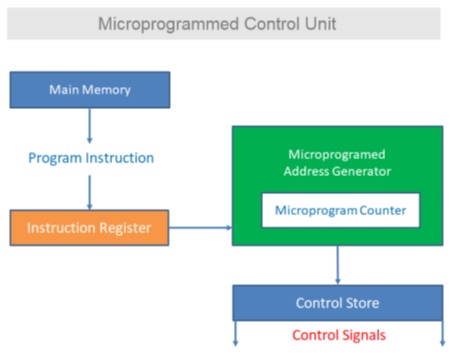
Control Unit FAQ
What Is Control Unit ?
The control unit, abbreviated as CU and it is an internal component of the microprocessor architecture.
The control unit generates the necessary control signals to execute the program instructions and to control the various operations performed by the processor.
The control unit performs, two important functions.
First, it decodes the program instructions so that the processor can operate on the data.
Second , The control unit also controls the processing speed of the processor and the various operations performed by the processor.
However, in order to understand what is control unit and its functions in computer architecture we need to first study how the microprocessor works.
The microprocessor, is said to be the, brain of the computer system.
It is the processor, that provides, the processing power to the computer.
What Are Components Of Control Unit ?
Let us study ,the four important internal components of the Control unit.
The control unit has four important components.
- Timing unit.
- Program Counter.
- Instruction Register.
- Instruction Decoder.
What Is CPU ?
A processor ( CPU ) is an integrated circuit ( IC ). The processor consist of millions of IC chips and each IC chip consist of millions of tiny component called transistor. The Transistor is madeup of silicon which is a semiconductor material .
The processor ( CPU ) controls all the activities of the computer system. And therefore it is referred as brain of the computer system. There are two main computer processor manufacturers Intel and Advanced Micro Devices ( AMD ). These two companies produce most of the processors used in desktop, laptops and notebooks.
A Central Processing Unit ( CPU ) performs millions tasks per second to execute a computer program by performing the basic arithmetic, logical, control and input / output ( I / O ) operations as specified by the program instructions.
A CPU is placed on the motherboard in a processor socket with locking liver mechanism in order to fix the processor chip properly into the processor socket . The processor socket contains a IC socket in which the processor chip is firmly mounted . A heatsink is mounted on the top of the processor chip which protects the processor from excessive heat generated.
What are Functions Of the CPU ?
The CPU performs some of the most important functions in a computer System and these functions include :
- To Perform Arithmetic Calculation Operations.
- To Perform Logical Operations.
- To Control Functions Of Other Hardware Components.
- To Fetch the Data And Program Instructions From Main Memory.
- To Decode the Program Instructions.
- To Operate On Data As per Program Instructions.
- To Store Data After Processing.
- To Continuously Execute Instruction Cycle / Machine Cycle.
Control Unit And Instruction Cycle
Join The Best Seller
Computer Science Online Course
This is the most comprehensive and unique Computer Science And Programming Fundamentals course Online which will give you in depth understanding of most important fundamental concepts in computer science And Programming .
